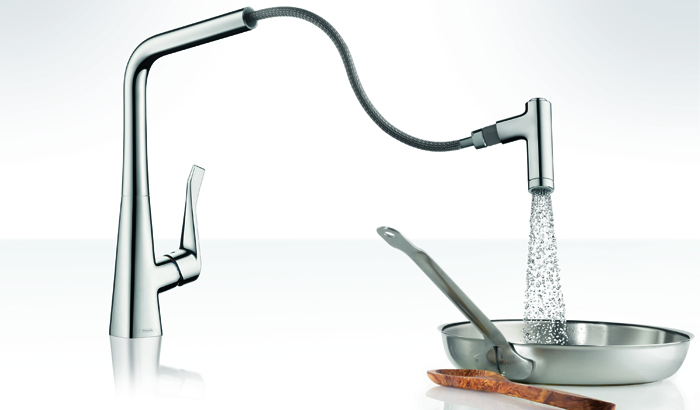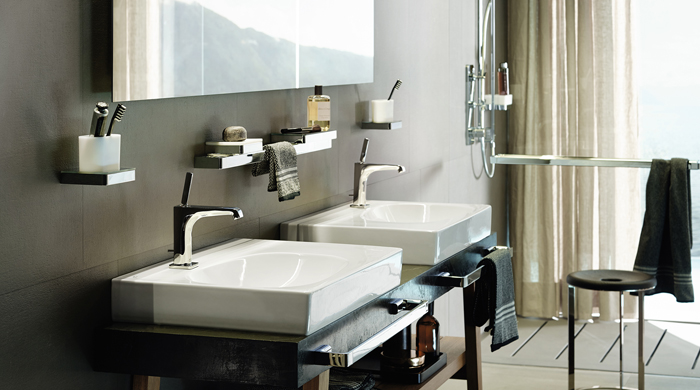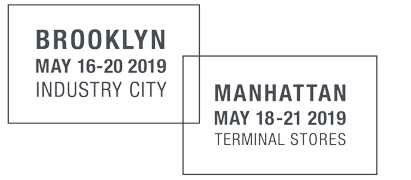CALL FOR ENTRIES: HANSGROHE + AXOR DAS DESIGN COMPETITION
CALL FOR ENTRIES: HANSGROHE + AXOR DAS DESIGN COMPETITION
From large hotels to multi-family spaces and single-family homes, Hansgrohe and its designer brand Axor are looking for outstanding projects of all types and scales. US based architects and interior designers are invited to submit a built residential or hospitality/commercial interior project that features products from either/both brands. The winner in each category will receive $2000 and be eligible to attend a VIP trip to the Black Forest, Germany. Submissions must be received by August 12. Entry is free at dasdesigncomp.com
At this occasion, WantedDesign addressed few questions to Philippe Grohe, VP Design Management, Hansgrohe SE, to learn more about the company origin and vision, and his collaboration with designers from all over the world to create products that answer technical, environmental and cultural challenges.
Long time supporter of WantedDesign, Axor + Hansgrohe was one of the 2016 Conversation Series sponsors.

Philippe Grohe – portrait by Alexander Schneider
WantedDesign: What is the origin and history behind the Hansgrohe Group?
Philippe Grohe: Hans Grohe (1871-1955) was an innovator. In 1899 he walked from Luckenwalde near Berlin to the small Black Forest town of Schiltach. Two years later he established a metal pressing workshop. Hans Grohe had a passion for technology and water, and so from 1901 onwards he bravely hedged his bets on the sanitary sector, which was still in its early stages of development. Of course, bathrooms in private houses were only just becoming fashionable at that time.
He specialized in tin showers, thus laying the foundations for untold success. During the course of the 20th century, Hans Grohe’s small three-man operation developed into a global company. Today, it is one of the international innovation and market leaders for bathroom and kitchen fixtures. Throughout all its generations, the company has had a true passion for water. Hans Grohe’s youngest son, Klaus Grohe (*1937), has played an active role in his father’s company – from 1968 up to 2008. He was the first to bring design into the company when he began collaborating with Hartmut Esslinger’s FROG Design in the late 60s and early 70s. He is also considered the sanitary industry’s mentor on issues of environmental protection and sustainability. He promoted energy- and water-saving products just as vehemently as he promoted environmental protection and resource conservation in manufacturing. The Hansgrohe Group’s two brands AXOR and hansgrohe stand for high-end bathroom collections and premium-quality products, respectively. Since the early 90s, AXOR represents the diversity and fascination of individual lifestyles in the bathroom. Discerning bathroom collections are created in collaboration with some of the world’s most successful designers. These collections are as individual and as diverse as people themselves, and offer a multitude of timeless classics: from Axor Starck to Axor Citterio. With the premium brand hansgrohe, bathrooms and kitchens are transformed into havens of well-being. It offers a broad range of high quality, timeless and affordable bathroom products that reflect German innovative engineering and design.

Hans Grohe with sons Hans Junior and Friedrich
WD: Can you tell us how the country and cultural background influences the company, its goals and philosophy?
PG:
All over the world, the Hansgrohe Group is famous for high-quality products in design and function. Since 1901, “Made in Germany” has been a recipe for success for the mixer and shower manufacturer. Around 80% of production takes place in Germany at several plants located in the vicinity of the company’s headquarters in the Black Forest. Hansgrohe delivers to more than 140 countries on all continents and around 80 percent of its sales are generated abroad. The company, which has a broad international base, remains devoted to keeping its German production sites. Why? The answer from the Black Forest is: “because we count on German expertise and offer our customers a guarantee of quality”. From there, the standards are passed on: continuous quality management ensures top product and service quality in all Hansgrohe plants around the world.
We only use high-quality materials, apply sustainable production methods, innovative thinking and pioneering research. As a company, we are committed to the health and well-being of our customers and employees. With these self-imposed quality standards, the company is really raising the bar in the sanitation industry. Hansgrohe customers benefit as a result – with reassurance when making purchasing decisions. These branded products are of the highest quality – and have an above-standard service life. After all, most people usually only plan a bathroom or kitchen once or twice in their lifetime.
WD: How do you go about choosing designers and the collaboration process?
PG: The choice of whom we work with is based on the potential for a long-term relationship, the added value a designer or a design team can bring to our product assortment, and of course, the fit between the kind of project we want to develop and the design partner. One of the privileges of my job in Design Management within the Hansgrohe Group is access to a network of creative people. The collaboration with architects and interior designers is based on regular dialogue at eye-level and meetings with the design offices and our team of engineers and product planners. No matter how long or short these meetings are; you always learn something for the next project. We have to keep a good balance between the creative and the technical side.

Hansgrohe_Metris 2-Spray HighArc Kitchen Faucet
WD: How do you envision new products that answer environmental challenges and embrace the diversity of the water ritual?
PG: Within our company, we focus on technology, design, and sustainability. Technology is often about efficiency: how can we use less water and still obtain the best in terms of function? And how can we design water in order to get the best feeling from our relationship with this element? In our showers, for example, we have added air to the water to accelerate the water touching the body’s surface. So with less water, you have the feeling of a greater exposure to the element. And this sticks to your body in a more functional way.
And for washbasin faucets, we have been going in the opposite direction: we are taking air out of the water. For decades, nearly all of the faucets have had “white water” flowing out of the tap. “White water” is perceived as more of a commodity and not as an element of nature. That is why at Hansgrohe we have started to work on transparent water, on waterfalls, to emotionalize and to emphasize the value of water.
We work on several levels. One is simply to help people to use less and save more; another is to work on the perception of water, what you feel when it touches you, what happens when you see it. And this latter dimension obviously includes the design of the product: we can design our products in such a way that they give value to the natural resource, or we can design them in such a way that they actually help to save water.

Antonio Citterio for Axor
WD: What are some recent AXOR or Hansgrohe products that you are particularly excited about?
PG: On the AXOR side, definitely our most recent collection, Axor Citterio E, with Antonio Citterio. It is a great example of what I mentioned above: designing products in such a way that they are easy to use and help to save water at the same time. Aesthetic appeal, sophisticated functionality and outstanding workmanship describe a collection of bathroom fixtures that exude elegance, high quality and worth. All 37 products that make up the collection share a visually appealing and harmonious look that complements a variety of styles, from art nouveau to modern urban.
On the Hansgrohe side, I am particularly excited about the new Metris single-lever kitchen mixers: with an ergonomic handle and extendable handspray, the mixer makes working at the kitchen sink unit easy and pleasurable. Metris offers two jet types – a normal spray and shower spray – both of which can be changed at the touch of a button. The long handle allows the faucet to be turned on and off easily and the temperature to be set precisely using hands, fingers and even elbows. And coming to the US market this fall: Metris Select, which changes the routine at the kitchen sink, making it more efficient and allowing the user to save water at the same time. Water is turned on and off by the touch of a button, temperature is set once by the handle. The Metris design blends in perfectly with the square shape of modern sink units.

Axor WaterDream 2016_Credit Uli Maier
WD: Can you talk more about the Axor WaterDream introduced in Milan this year?
PG: With the Axor WaterDream 2016 we again discussed the meaning and value of water in our living space with some of the world’s best architects and designers, while testing the limits of individualization by making use of materials traditionally used in interior design. The project allowed us to dream about leaving the age of brass faucets behind and moving towards more emotional materials. I was happy to see that this discussion was very well-received by the visitors of our showroom in Milan during FuoriSalone. As far as a presentation / exhibition in the US is concerned, let me say this much: we are working on it – stay tuned!

